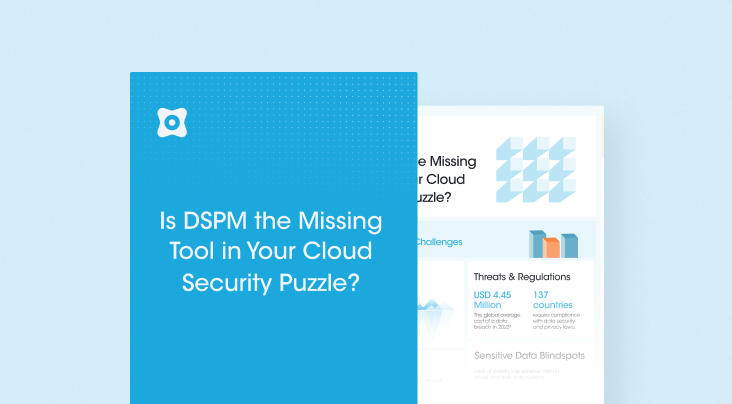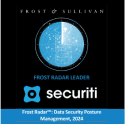A data breach is akin to a home invasion. During a home invasion, a burglar would break into your home during the silence of the night and steal your valuables without you knowing it until it is too late. This is exactly what a data breach feels like to organizations.
Data breaches are a common occurrence across the globe. In fact, hundreds of thousands of businesses experience a certain level of data breach every year. To put things into perspective, IBM’s Cost of Data Breach 2022 report revealed that 83% of the surveyed organizations had experienced more than one data breach. No organization that collects personal or sensitive data is safe against the threat of unauthorized or illegal access to or loss or destruction of data. However, what they can do is take appropriate steps to prevent data breaches to some extent or minimize their impact.
But what exactly is a data breach? How does it occur? What are the consequences that organizations have to shoulder due to a breach? And, more importantly, what organizations can do to prevent or mitigate data breaches. If you wish to find answers to all these questions, we suggest you continue reading.
What Is a Data Breach?
Data breaches are security incidents that lead to loss, alteration, illegal or unauthorized destruction or unauthorized disclosure of, or unauthorized access to personal data that is processed, stored, or transmitted by an organization.
A cyber threat actor, an individual or a group, uses various tools and methods to execute a data breach. For instance, a threat actor may breach a corporate network through malware, also called malicious software. Or, they could disguise themselves as a corporate employee and send phishing emails containing malicious links to existing employees.
Often, the inherent vulnerabilities in the system or misconfigured settings give cyber attackers a way into the corporate network, such as a misconfigured cloud service or application that may have a default password or an unprotected publicly accessible storage bucket.
Data breaches have wide-reaching consequences that can greatly impact an organization's financial and reputational position. Therefore, preventing and responding to such cyber threats has become ever more critical.
For starters, we’ve witnessed the non-stop proliferation of data due to the increased number of devices, systems, and applications. In fact, we are leveraging data to generate more data. The abundance of personal data across different systems and devices creates more opportunities for attackers to gain unauthorized access to personal data. Therefore, it is important for organizations to primarily curb the occurrence of such incidents and mitigate their effects where necessary.
Secondly, and most importantly, due to the growing instances of data breaches and other threats, international regulatory authorities have enacted data protection and privacy laws. These laws give more control to individuals over their data and place greater responsibilities upon businesses in relation to data protection, integrity, accountability, and privacy. Hence, in the current era, a data breach means not only heavy loss of data but also huge regulatory fines.
Types of Data That Threat Actors Breach
There are different types of data that cyber attackers attempt to access or steal during a data breach, such as:
Personally identifiable information (PII) is any information that can be used (often with another PII) to identify or distinguish between two individuals. This type of information includes an individual’s name, email address, phone number, date of birth, etc. Apart from that, PII also has a sub-category, i.e., sensitive personal information (SPI). As the name suggests, it includes any piece of information whose exposure to unauthorized persons can potentially harm the concerned individual. This type of data includes social security numbers, driver’s license numbers, fingerprint data, and data relating to one’s ethnic origin, religious affiliation, sexual orientation, etc.
Learn More About Personally Identifiable Information (PII)
Health information usually includes any category of medical data of an individual, such as medical records, imaging data (CTR or MRI), mental health data, etc. The Health Insurance Portability and Accountability Act (HIPAA) in the United States defines different types of healthcare data as Personal Health Information (PHI).
As the name suggests, financial information includes data related to financial accounts, transactions, or assets of an individual or an organization.
Payment card data differs from financial information in that it is specific to payment cards, such as credit card data or debit card data. This type of data includes the card number, PIN, or CVV of an individual’s payment card. The Payment Card Industry Data Security Standard (PCI DSS) generally regulates payment card data.
Learn More About the Payment Card Industry Data Security Standard (PCI DSS)
This type of data includes sensitive or confidential data that is related to a government or its military bodies. This type of information includes military intelligence data, weapon patent data, etc. In the United States, military data is regulated by the International Traffic in Arms Regulations (ITAR).
Learn More About ITAR Compliance
Destructive Fallouts of Data Breaches
A data breach can happen even due to minor negligence - however, it can certainly result in a great deal of chaos. Equifax’s 2017 data breach is the primary example of a huge-scale data breach that occurred due to a system vulnerability that the organization could not fix in time. The resulting breach gave threat actors clear access to the data of over 130 million Americans, 15 million Britishers, and 19,000 Canadians.
When a breach occurs, it is not just the organization that suffers the consequences but also the affected individuals who are exposed to harm.
Following are some of the consequences of data breaches.
Financial Loss
Data breaches have serious implications, starting with heavy financial losses. According to the IBM Cost of Data Breach 2022 report, the average global cost of a data breach in 2022 was $4.35 million, while the average cost of a breach in the US alone in the same year was $9.44 million. Different factors impact the total cost of a breach, such as the cost of detection and escalation, breach notifications to the impacted individuals and relevant regulatory authorities, the post-breach responses and mitigation measures, and lost business opportunities.
Reputational Damage
A monetary loss is easier to recover than a loss of trust. Data breaches can negatively impact an organization's reputation, which takes years to build. In fact, it can have a long-lasting impact on an organization’s ability to re-establish itself, gain positive reviews, or earn the trust of consumers or the general public. Moreover, negative media coverage also adds more fuel to the fire, making it more challenging to retain customers or even business partners.
Regulatory Fines
Data protection laws are very strict when it comes to security breaches. Almost every data protection law requires businesses to have optimal administrative and technical security controls in place for protecting data against unauthorized access, leak, destruction, loss of data, etc. Apart from that, data privacy laws also provide notification requirements in the event of a breach.
For instance, articles 33 and 34 of the European Union’s General Data Protection Regulation (GDPR) outline that a personal data breach, which would likely put the rights and freedom of data subjects at risk, must be notified. In this regard, businesses must notify the relevant supervisory authority and the impacted individuals where the breach will likely result in a ‘high’ risk to their rights and freedoms.
Failure to notify the breach to the concerned authorities and individuals in a timely manner can result in huge fines and penalties.
Lost Business Opportunities
A data breach may make an organization lose its ability to seek new business opportunities or bid on new contracts, as any potential business partners would only seek businesses with a good market reputation and are more secure.
Top Threat Vectors That Lead to Data Breaches
There is a myriad of tactics in cybercriminals’ arsenal that they are not afraid to use to make their data breach attempt successful. Let’s take a quick look at some of the most common yet effective ways in which threat actors execute data breaches.
Malware
Malware includes trojans, keyloggers, ransomware, and other types of malicious software that cybercriminals may use to steal data. For instance, a cybercriminal might disguise a malicious URL as a lottery or giveaway coupon to bait unsuspecting users.
Insider Threats
According to a recent insider threats report, 74% of organizations believe that insider attacks have become more frequent over the years. The report goes on to cite that 60% of organizations have experienced at least one insider attack, while 25% have suffered multiple attacks. An insider attack is any data breach that occurs when a person within an organization, intentionally or unintentionally, gains unauthorized or illegal access to sensitive, confidential, or proprietary information.
Learn About Six Different Insider Threats
Security Misconfigurations
It is a pretty common type of cybersecurity vulnerability where security settings or configurations are not properly implemented, especially in cloud offerings. In a multi-cloud environment, businesses may have multiple cloud service providers. Each service has a distinct set of configurations. Due to the complex infrastructure of a multi-cloud environment and often due to a lack of understanding of different settings, some key security misconfigurations may be overlooked. This ultimately leads to a security breach. A misconfiguration may include publicly accessible cloud storage, default passwords, opened internal or external ports, etc.
Social Engineering Attacks
Since humans are the weakest link in cybersecurity defenses, data breaches constituting social engineering attacks are often successful. These attacks are geared towards humans and are meant to manipulate them into taking certain actions, such as clicking a malicious link with malware or sharing sensitive information. There are many ways to conduct a social engineering attack, such as phishing, tailgating, spear phishing, etc.
Understanding Data Breach Cycle
Every cyber attacker uses a distinct tool or method to steal data into a target’s network or system. However, on a broader level, the process of the attack remains the same.
Reconnaissance
The first is the research or observation phase. In this phase, the cyber attacker carefully and methodically picks the target, making sure that it is easier to breach or reach the target. The perpetrator tries to find the target’s weaknesses to determine what method would best fit the breach attempt. This phase involves hours and days of observation, and it often brings forth expected results.
Execution
The next is the intrusion phase, where the perpetrator tries to make the initial contact. Since the attacker has the requisite understanding of the target, it is easier for them to execute the breach attempt. If it is a system or a network, the cyber attacker may look for vulnerabilities, open ports, or any misconfigured system. If it is an individual or an employee, the perpetrator would first stalk the individual on their social media profiles to learn more about them in order to be able to conduct a targeted social engineering attack.
Exfiltration
Once the attacker is successful in the breach, they will try to extract and transfer the sensitive data outside the corporate network. In this phase, the attacker can do a number of things with the breached data or the targeted system. For instance, the attacker may sell data on the dark web or use it to cause damage to concerned individuals, such as through blackmail or harassment, or the attacker may use a compromised system for distributed denial of service (DDoS) attacks.
Best Practices to Prevent & Mitigate Data Breaches
Here are some of the best practices you can consider to prevent or mitigate data breaches.
Data Risk Assessment
As we have learned so far, data breaches can be costly and chaotic for a company’s reputation. Therefore, it is crucial for businesses to reinforce cyber defense mechanisms around their sensitive networks, data systems, and the sensitive data itself.
To kick it off, assess the current state of your organization’s sensitive data assets and security. Review your organization's data landscape and see what sensitive data you have and what regulatory security guidelines apply to it. Moreover, assess the current security status of the sensitive data to pinpoint security gaps and reasonably foreseeable threats that may exploit the business mechanisms and vulnerabilities of the systems.














